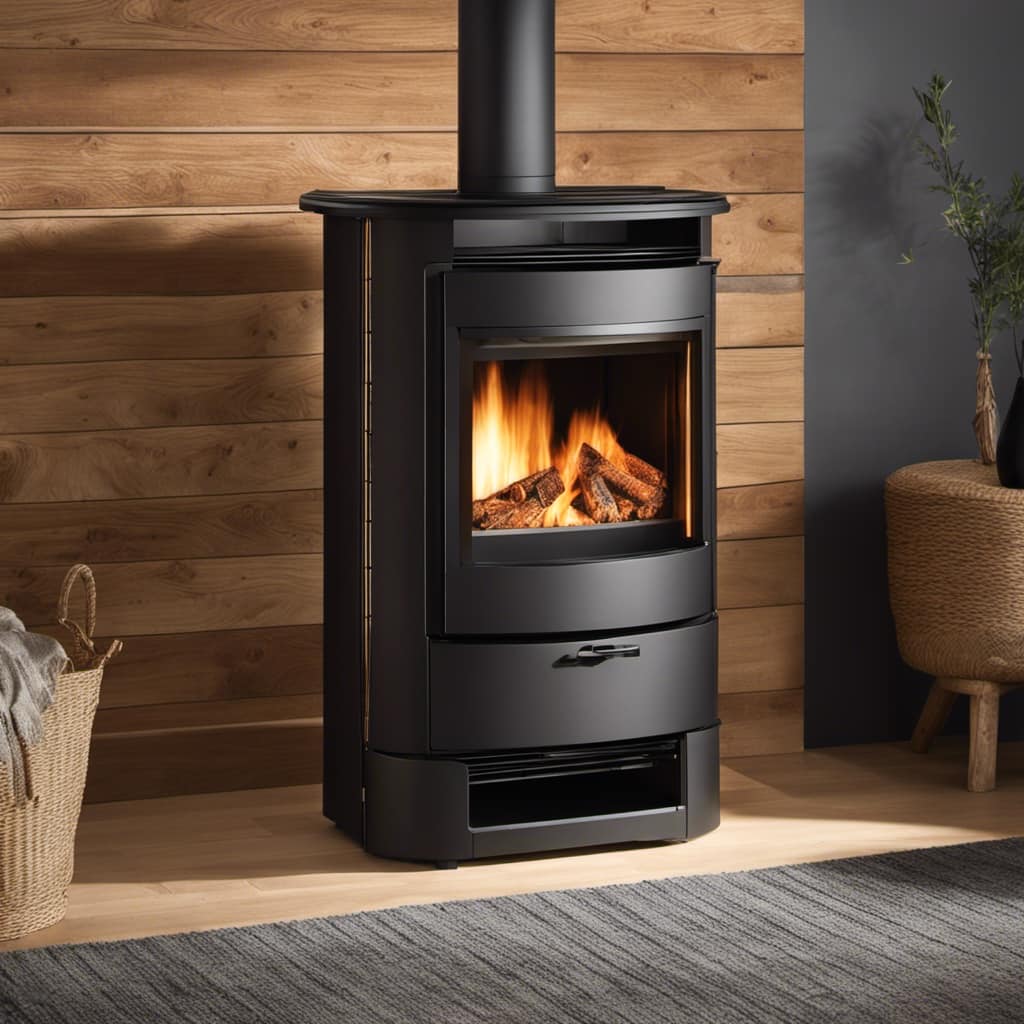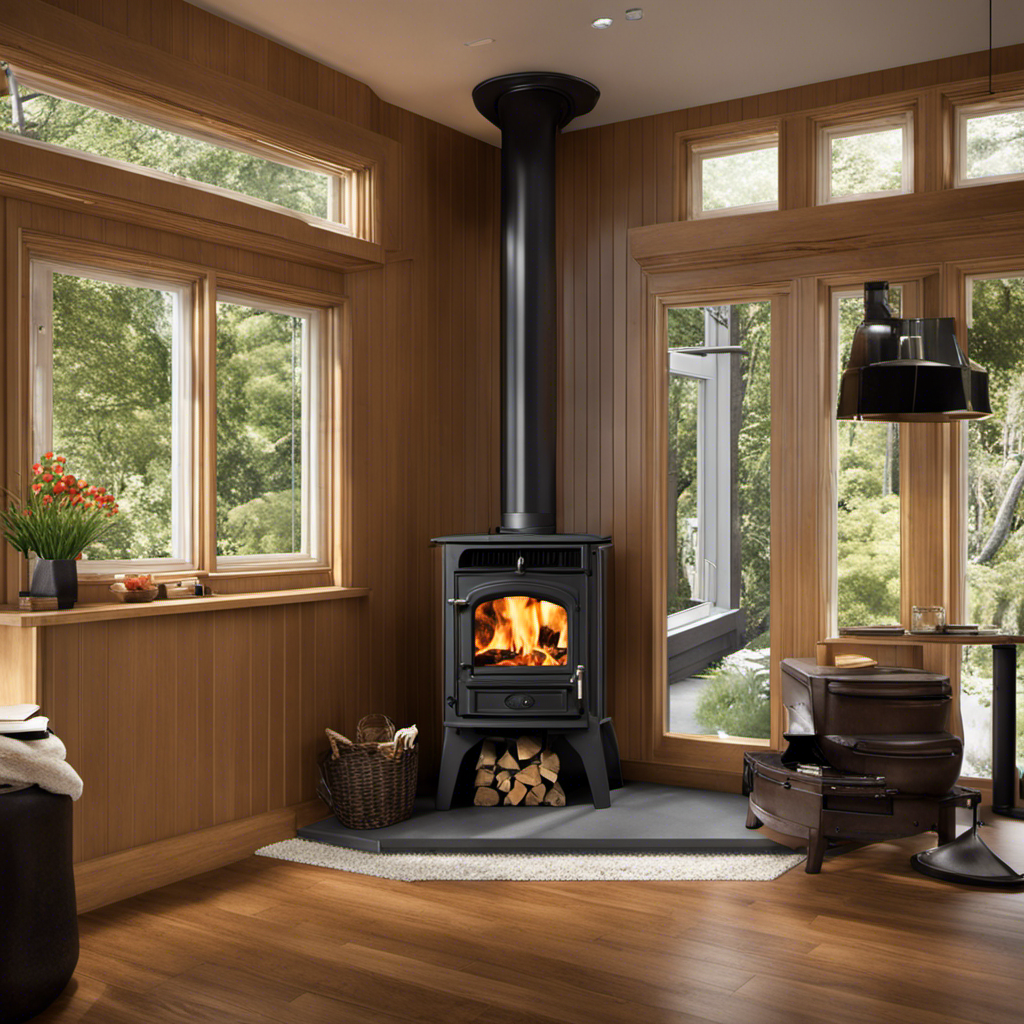
With my knowledge in the field, I have the necessary skills to provide a clear understanding of how a catalytic wood stove functions.
By utilizing a parallel combination of advanced technology and efficient design, these stoves are able to maximize heat output while minimizing emissions.
The key lies in the catalytic converter, a device that facilitates the combustion process by reducing harmful byproducts.
This introduction will delve into the intricate workings of catalytic wood stoves, revealing the secrets behind their impressive efficiency and environmental friendliness.

Key Takeaways
- Catalytic converters in wood stoves reduce harmful emissions in exhaust gases.
- The combustion process in wood stoves produces carbon dioxide, water vapor, and by-products.
- Proper air supply in wood stoves ensures complete combustion and improves indoor air quality.
- Secondary combustion in wood stoves reduces emissions and improves efficiency by burning unburned gases and particulate matter.
The Role of the Catalytic Converter
As I was researching, I learned that the role of the catalytic converter is to reduce harmful emissions in the exhaust gases. The catalytic converter mechanism works by utilizing a catalyst to facilitate chemical reactions that convert harmful pollutants into less harmful substances.
It contains a honeycomb-like structure made of ceramic or metal that’s coated with precious metals like platinum, palladium, and rhodium. These metals act as catalysts and promote the conversion of pollutants like carbon monoxide, nitrogen oxide, and hydrocarbons into carbon dioxide, nitrogen, and water vapor.
However, over time, the catalyst may become less effective due to contamination or aging. To maintain its efficiency, the catalytic converter undergoes a catalyst regeneration process, which involves burning off accumulated deposits or replacing the catalyst entirely.
This ensures that the converter continues to reduce harmful emissions and keeps our environment clean.

Understanding the Combustion Process
I love watching the combustion process in action, as the flames dance and transform the wood into heat and energy. Combustion is a chemical reaction that occurs when a fuel reacts with oxygen in the presence of heat.
In the case of wood, it’s composed mainly of carbon, hydrogen, and oxygen. As the wood burns, these elements combine with oxygen to produce carbon dioxide, water vapor, and other by-products. The temperature at which combustion occurs is known as the combustion temperature, and it varies depending on the type of fuel.
Inefficient combustion can lead to the release of harmful gas emissions, such as carbon monoxide and nitrogen oxides. To minimize these emissions, it’s important to ensure proper air supply and temperature control during the combustion process.
How Air Supply Affects Efficiency
To maximize efficiency, it’s crucial to maintain an adequate air supply and regulate temperature in a catalytic wood stove. The air supply plays a significant role in ensuring complete combustion of the wood, which ultimately affects the stove’s performance and the environment.
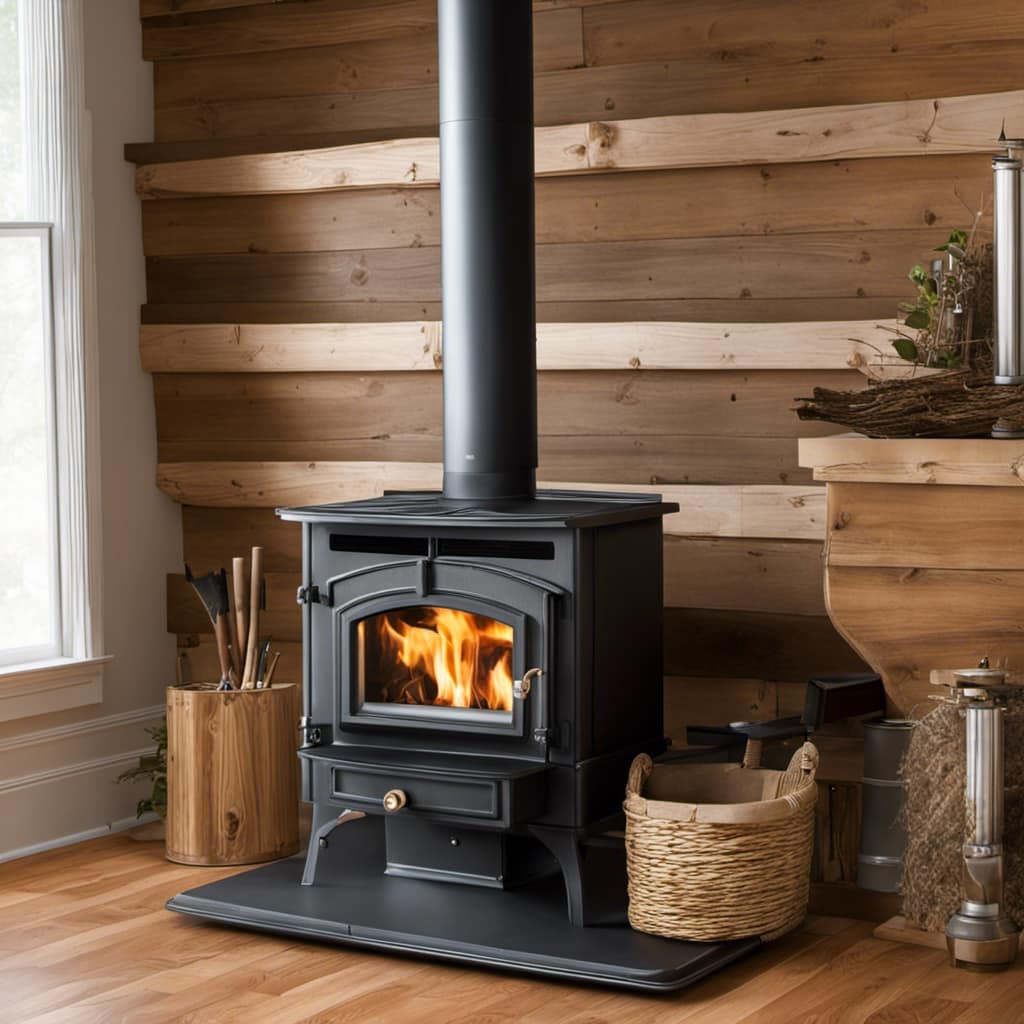
Here are three key reasons why air supply is essential for a catalytic wood stove:
-
Improved Air Quality: Proper air supply helps to achieve complete combustion, reducing the emission of harmful pollutants like carbon monoxide and particulate matter. This leads to better indoor air quality, promoting a healthier living environment for you and your family.
-
Increased Efficiency: By controlling the air supply, you can optimize the burning process, ensuring that the wood burns at an ideal rate. This maximizes the stove’s efficiency, allowing you to generate more heat with less fuel consumption.
-
Reduced Environmental Impact: A well-regulated air supply helps to minimize the release of smoke and other pollutants into the atmosphere. By using a catalytic wood stove with proper air supply, you can contribute to reducing the overall environmental impact associated with wood burning.

The Importance of Secondary Combustion
Maintaining an adequate air supply and regulating temperature are crucial for optimal performance and minimizing the environmental impact of a catalytic wood stove.
But it’s equally important to understand the importance of secondary combustion.
Secondary combustion efficiency plays a significant role in reducing emissions and improving the overall efficiency of the wood stove.
During secondary combustion, unburned gases and particulate matter from the primary combustion phase are ignited and burned.

This process significantly reduces the amount of pollutants released into the atmosphere.
To achieve efficient secondary combustion, it’s necessary to provide enough oxygen to the combustion chamber and maintain high temperatures.
This can be achieved through proper stove design, such as incorporating a secondary air supply system and ensuring proper insulation.
Exploring the Benefits of Catalytic Wood Stoves
Using a catalytic wood stove can provide numerous benefits, such as increased efficiency and reduced emissions. These advantages make them an appealing choice for homeowners looking to heat their homes in a more environmentally friendly and cost-effective way.
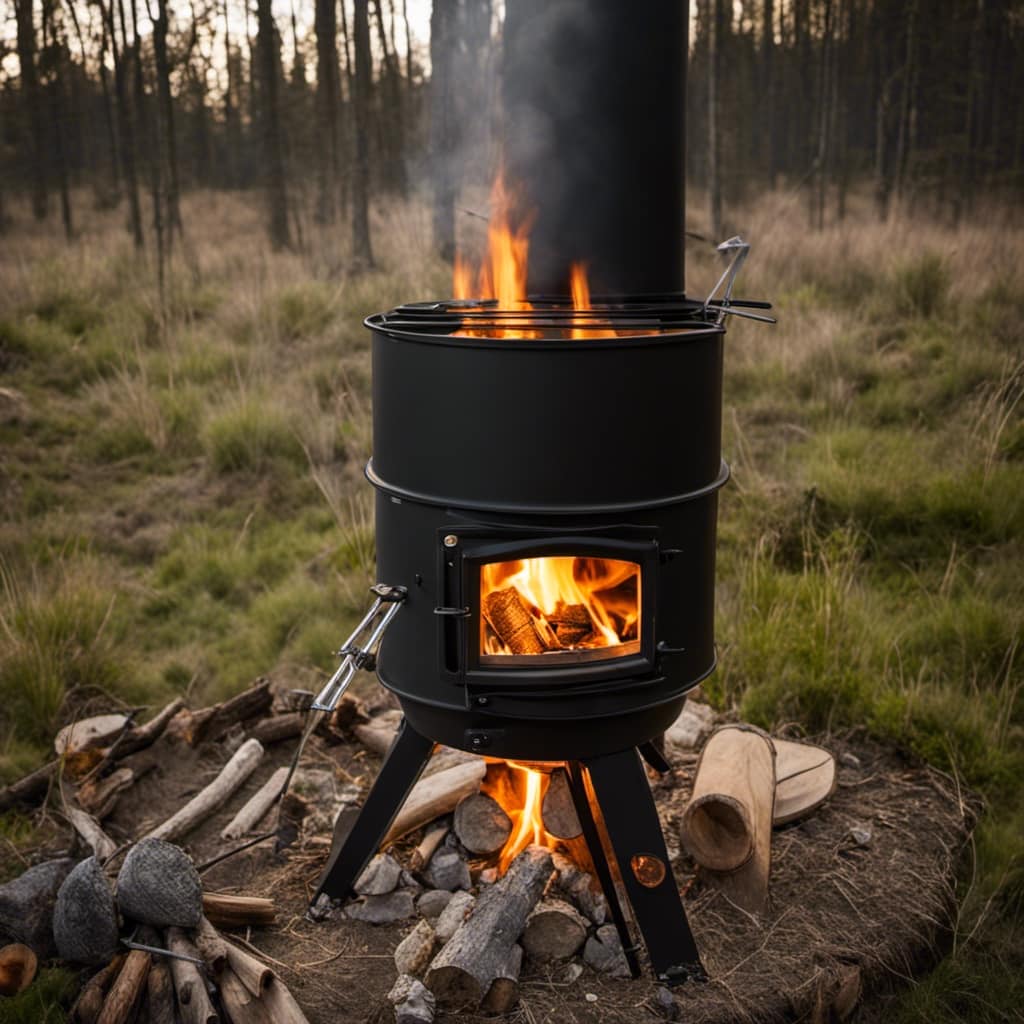
-
Improved Heat Output: Catalytic wood stoves are designed to maximize heat production by efficiently burning wood. This means that you can enjoy a cozy and warm atmosphere in your home without wasting energy or fuel.
-
Lower Fuel Consumption: The catalytic converter in these stoves helps to optimize the combustion process, resulting in a more thorough burn. This means that you can use less wood to achieve the same level of heat output, saving you money on fuel costs in the long run.
-
Reduced Environmental Impact: By burning wood more efficiently, catalytic stoves produce fewer harmful emissions. This not only benefits the environment by reducing air pollution but also helps to improve indoor air quality for you and your family.
Frequently Asked Questions
How Often Does the Catalytic Converter Need to Be Replaced in a Wood Stove?
The lifespan of a catalytic converter in a wood stove can vary depending on usage and maintenance. Signs of a failing catalytic converter include reduced efficiency and increased emissions. Regular inspections can help determine when replacement is needed.

Can a Catalytic Wood Stove Be Used in Areas Where Wood Burning Is Restricted?
Yes, a catalytic wood stove can be used in areas where wood burning is restricted. These stoves are highly efficient and have many benefits, such as reducing emissions and maximizing heat output.
Are Catalytic Wood Stoves More Efficient Than Traditional Wood Stoves?
Catalytic wood stoves are more efficient than traditional ones. They burn fuel at higher temperatures, reducing emissions and increasing heat output. This means less wood is needed, saving money and the environment.
How Does a Catalytic Wood Stove Affect Indoor Air Quality?
Using a catalytic wood stove can have positive effects on indoor air quality. It reduces emissions by burning wood at a higher temperature, minimizing pollutants. This can improve respiratory health and create a healthier environment.
Can a Catalytic Wood Stove Be Used as the Sole Source of Heating in a Home?
Yes, a catalytic wood stove can be used as the sole source of heating in a home. While it produces wood stove emissions, it is a more efficient and environmentally friendly option compared to other alternative heating options.
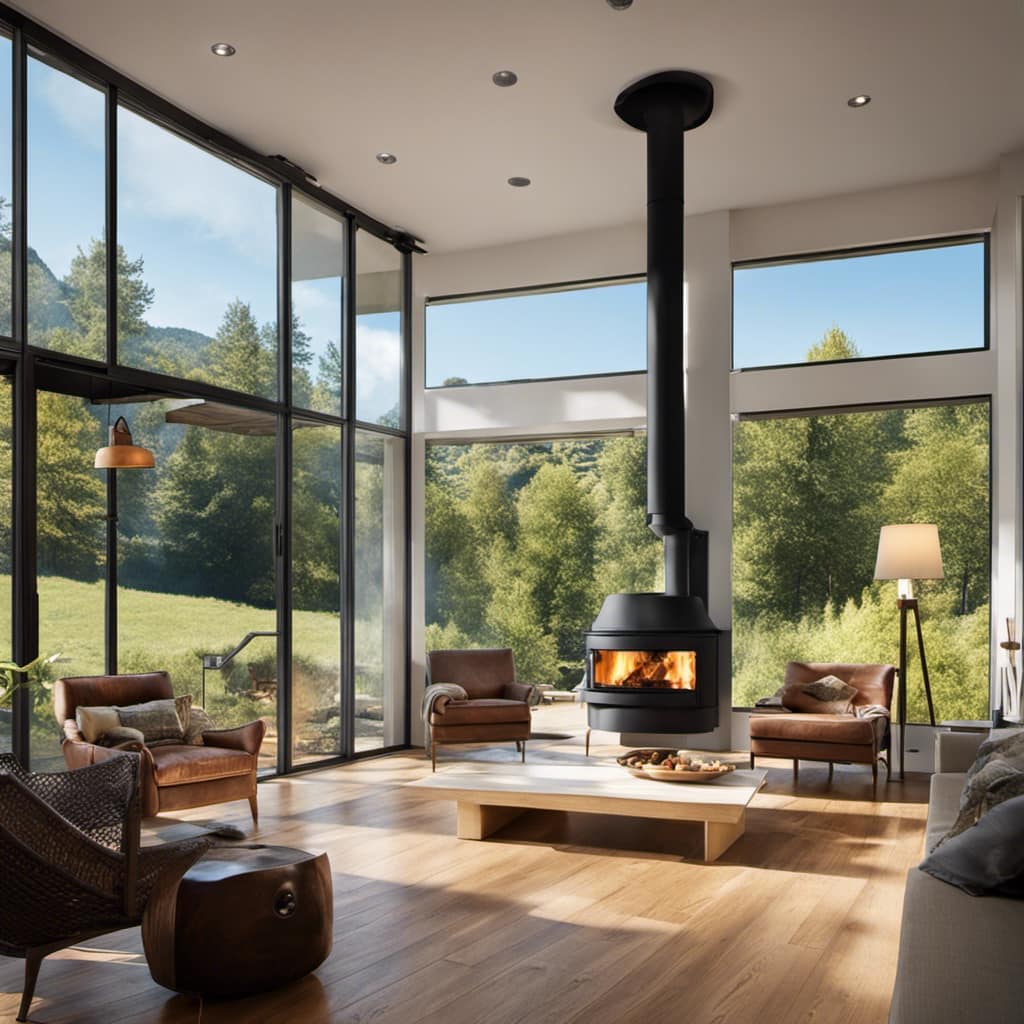
Conclusion
So there you have it, folks. The catalytic wood stove, a marvel of modern engineering, takes the simple act of burning wood and turns it into a complex dance of combustion and efficiency. Who knew that a contraption with a fancy name could make your fireplace experience so much more enjoyable?
Next time you cozy up to your wood stove, take a moment to appreciate the science behind it. It’s ironic, really, how something so technical can bring such warmth and comfort to our homes.
Growing up surrounded by the vast beauty of nature, Sierra was always drawn to the call of the wild. While others sought the comfort of the familiar, she ventured out, embracing the unpredictable and finding stories in the heartbeat of nature.
At the epicenter of every remarkable venture lies a dynamic team—a fusion of diverse talents, visions, and passions. The essence of Best Small Wood Stoves is crafted and refined by such a trio: Sierra, Logan, and Terra. Their collective expertise has transformed the platform into a leading authority on small wood stoves, radiating warmth and knowledge in equal measure.

